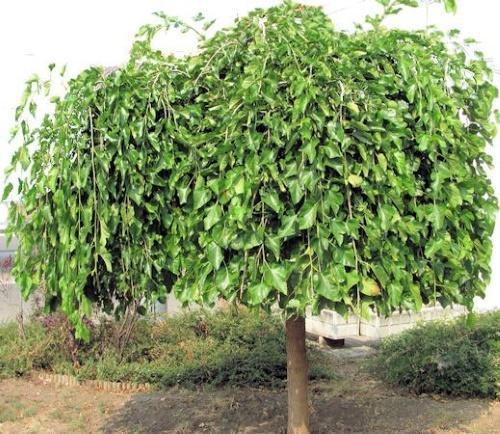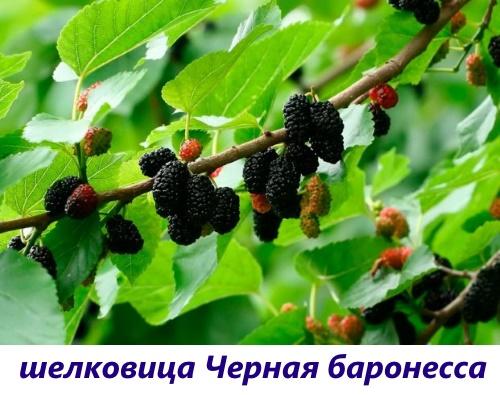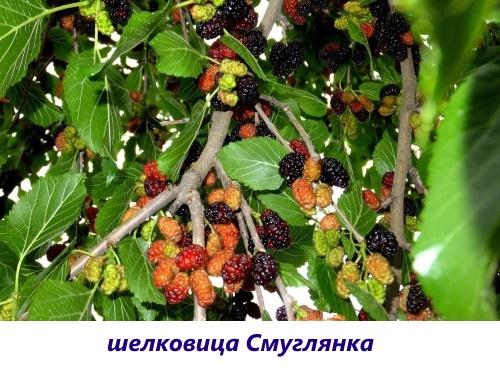Are you wondering if mulberry grows in Siberia?
 Mulberry on the territory of Russia can most often be found in the European part, the Crimea and the Transcaucasus. It is generally accepted that she is shown a warm climate, therefore, when asked whether mulberry grows in Siberia, many answer negatively. Indeed, a slow-growing tree with brittle roots and shoots prefers the southern regions. There he is more comfortable, besides, in the warmth and the berries are sweeter. But, despite the external fragility, the mulberry is quite capable of surviving and even bearing fruit in the Siberian expanses. However, there are some nuances that should be considered.
Mulberry on the territory of Russia can most often be found in the European part, the Crimea and the Transcaucasus. It is generally accepted that she is shown a warm climate, therefore, when asked whether mulberry grows in Siberia, many answer negatively. Indeed, a slow-growing tree with brittle roots and shoots prefers the southern regions. There he is more comfortable, besides, in the warmth and the berries are sweeter. But, despite the external fragility, the mulberry is quite capable of surviving and even bearing fruit in the Siberian expanses. However, there are some nuances that should be considered.
Does mulberry grow in Siberia
Of course, the thermophilic southern black mulberry is unlikely to take root in cold climates. But breeders have bred many varieties of white mulberry with increased winter hardiness. They are able to withstand frosts up to 30 °. In especially harsh winters, shoots freeze slightly, but quickly recover.
White mulberry differs from black mulberry not in fruit color. This variety has a white bark, even in adulthood. The berries themselves can be either white or pink or even black. The white mulberry also has smooth leaves, the shape of which is very similar to the heart.
It is clear that only frost-resistant zoned varieties should be chosen for cultivation in Siberia. So, suitable for planting in cold regions are such varieties of white mulberry:
- Black Baroness. The tree is tall, from 18 m, with a dense crown in the form of a tent. Fruits are black, up to 3.5 cm long, sweet, with a light aroma. Ripen in the middle of summer.

- The dark woman. A medium-sized tree with a height of 3 to 15 m with a crown in the form of a wide pyramid. Black berries are similar to blackberries, ripen in early summer. The variety is characterized by high yield and good transportability (compared to other types).

- Smolensk pink. An early variety, a tall tree with a dense, densely leafy crown. Fruits are pink with sourness.

Smolensk pink is the most persistent of the presented white mulberries. Its "limit" of frost resistance is 35 ° of frost against 30 ° for the previous two varieties.
Features of the "Siberian" cultivation of mulberry
 The short spring-summer period still leaves an imprint on the development of culture. If in the south the mulberry begins to bear fruit at 7-8 years of age, then in Siberia the first harvest can usually be tasted by the 10th anniversary of the tree.
The short spring-summer period still leaves an imprint on the development of culture. If in the south the mulberry begins to bear fruit at 7-8 years of age, then in Siberia the first harvest can usually be tasted by the 10th anniversary of the tree.
It is better to plant mulberries on the southern slopes, protected from the wind, or near the southern wall of a high building. Blown areas and lowlands are not suitable for this crop. For the winter, the trunk circle should be well mulched to help the tree survive the cold.
The most successful wintering in Siberia will be mulberry growing on a low trunk. The tree tolerates cutting well and grows back quickly, including after freezing. therefore pruning should be annual.